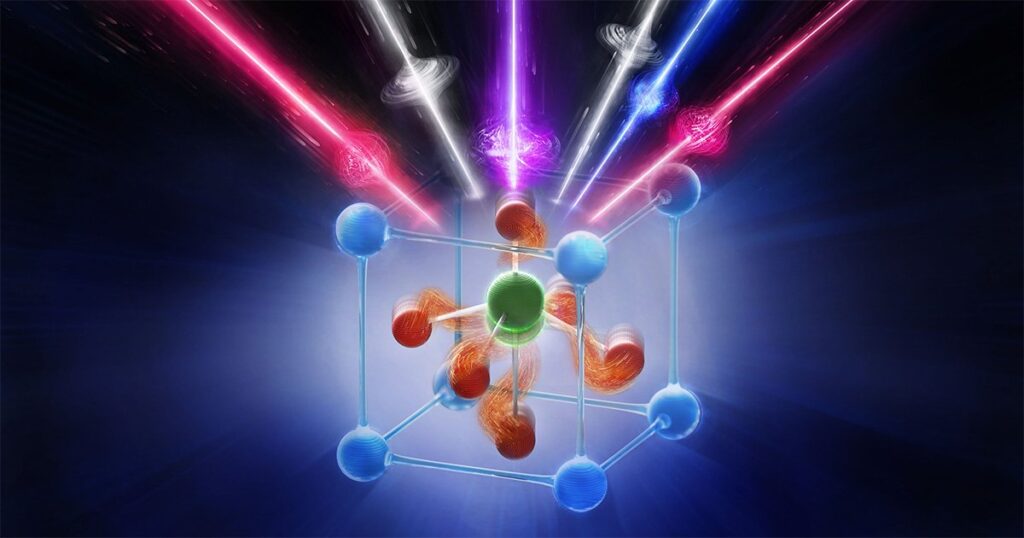
An international team of scientists has made a significant breakthrough in manipulating the properties of ferroelectric materials using light. Led by Le Phuong Hoang and Giuseppe Mercurio from the European XFEL, the researchers achieved control over these materials on ultrafast timescales, paving the way for faster and more energy-efficient electronic components.
Ferroelectrics are unique materials where positive and negative charges are slightly displaced, producing an internal electric field known as spontaneous polarization. Traditionally, reversing this polarization requires an applied electric field, making ferroelectrics appealing for applications such as nanoscale switches and advanced data storage. The team’s study focused on barium titanate (BaTiO3), a well-known ferroelectric oxide, using bright, short X-ray flashes and optical lasers.
The researchers tracked changes in polarization, lattice structure, and electronic states with an unprecedented temporal resolution of 90 femtoseconds. Their experiments revealed that within just 350 femtoseconds of laser excitation, the polarization of the material shifted dramatically while the crystal lattice remained relatively unchanged. This observation marks the first time researchers have demonstrated that polarization can be altered independently of lattice distortion, a phenomenon that had been theorized but never previously confirmed.
“This result tells us that electrons excited by light can drive changes in polarization far more quickly than the crystal structure itself can respond,” explained Le Phuong Hoang. He emphasized that this discovery provides a new method for controlling material behavior at the electronic level.
The implications of this research extend beyond theoretical interest. Giuseppe Mercurio noted, “If light alone can achieve what previously required complex circuitry and external fields, the design of future devices could become much simpler.” He added that this approach could lead to new materials that combine electric and magnetic properties, potentially opening new frontiers for multifunctional electronics.
Zhong Yin, an Associate Professor at Tohoku University, highlighted the transformative potential of next-generation free-electron lasers, stating that they open up new possibilities for observing and understanding material behavior at both length and time scales previously deemed unreachable. The study not only introduces a new mechanism for controlling material properties but also does so in a way that is faster and more versatile than conventional methods.
By harnessing ultrafast light pulses instead of relying on electric circuitry, the research is a significant step towards light-controlled electronics. The potential applications of this technology span across sensing technologies, data processing, and energy-efficient information storage.
This groundbreaking study, titled “Ultrafast decoupling of polarization and strain in ferroelectric BaTiO3,” was published in Nature Communications. The work was carried out by a collaborative effort including researchers from various institutions, showcasing the power of international scientific cooperation in advancing technology.






